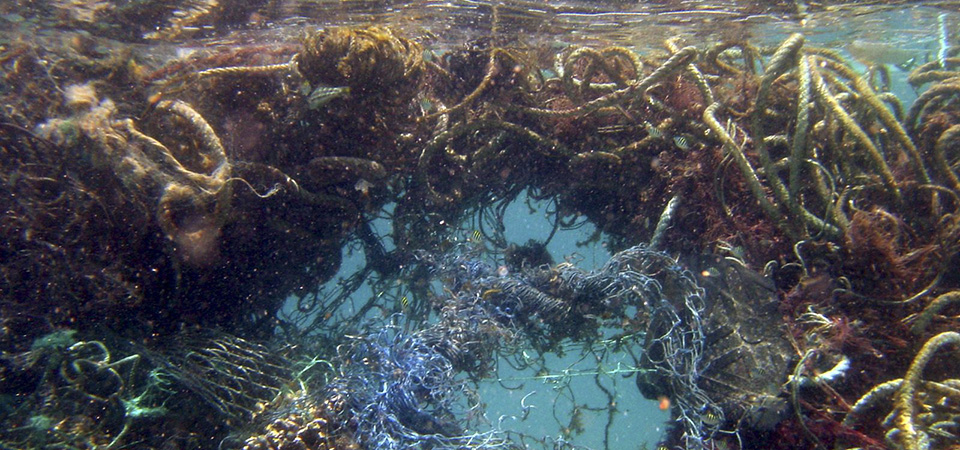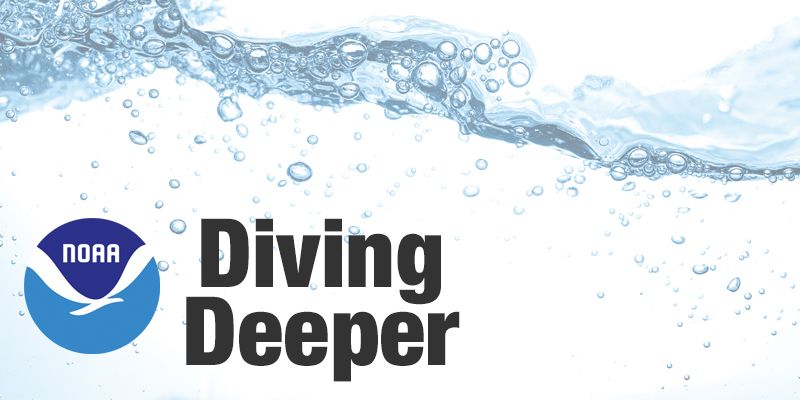Marine Debris Movement
Ocean Shorts: Episode 13

Is marine debris moving?
Dive into our latest Ocean Shorts podcast as we explore how marine debris moves in our environment and what causes it to move.
Transcript
HOST: Welcome to Ocean Shorts where we revisit popular Making Waves and Diving Deeper episodes. I’m your host Kate Nielsen. Today, we’ll talk about how marine debris moves in the environment. In March 2013, I was joined by Sherry Lippiatt from the NOAA Marine Debris Program to talk about this topic.
Let's listen in.
HOST: First, can you tell us about how marine debris behaves in the environment. Does it move from place to place or does debris tend to stay in just one place?
SHERRY LIPPIATT: Marine debris certainly moves throughout the marine environment. And debris that's made of persistent materials, like plastic, can travel long distances from far inland within a watershed through rivers and streams and out into the ocean. Once debris makes it to the ocean, it might be deposited back on shore or move very far offshore. And we know that debris can travel long distances because it's been found in these really remote regions of the world, like the Arctic and Antarctic. And, even on our shorelines here in California, we often find debris from overseas.
HOST: What kinds of things then cause marine debris to move?
SHERRY LIPPIATT: There's a number of factors that affect where a piece of marine debris will move and how long it will take to get there. And, along its journey, debris in the ocean will move both horizontally and vertically in the water column, and this movement depends on physical factors, like winds and currents, and characteristics of the debris itself. So, for example, marine debris that's denser than seawater will sink out of surface waters and debris that's less dense than seawater is going to remain floating and might travel very long distances with surface ocean currents.
Now, there's also something called the windage of an item, or how high a piece of debris floats above the surface of the water. And this windage determines how much of the debris movement is affected by the wind. So, something like a large buoy, which is exposed to the wind, will move faster in the downwind direction than say a piece of lumber that's mostly submerged beneath the surface of the water and is moved by the ocean surface currents.
HOST: So if we have this data on currents and winds, can we predict, almost like a forecast, where a piece of debris will move and maybe where it will ultimately end up?
SHERRY LIPPIATT: Yeah, we can use computer models to simulate the movement of debris. And, there are three key components that these models need to work properly. Those are data on winds, currents, and how the actual stuff you want to move around is going to behave in time. For example, you might have a large buoy with a known windage, but you also need to know what environmental forces are acting on it and how that will affect its trajectory.
Now, the same challenges that are faced by meteorologists in predicting the weather also apply to oceanographers. Because winds and ocean currents are really variable on smaller scales and are constantly changing even on large scales, we're limited in our ability to forecast debris movement. So, what NOAA and our partners are doing is using a tool called the General NOAA Operational Modeling Environment, which provides a hindcast, rather than a forecast, of the movement of debris. The model moves simulated particles under the influence of known wind and current data, and it tells us where these particles, which represent debris, have travelled over time up to the present day.
But, it's important to mention that even though we do have this data on how winds and currents have behaved in the past, there's always a degree of uncertainty associated with these hindcasts. One example is that the model doesn't account for debris degrading or sinking over time and the quality and resolution of the wind and current data will also affect the accuracy of the model.
HOST: That's all for today's Ocean Shorts. Thanks for joining us! For more information on how marine debris moves in our environment, see our show notes for links. Be sure to join us for the next episode.

Connect with ocean experts in our podcast series that explores questions about the ocean environment. Get ready to Dive Deeper!
Subscribe to Feed | Subscribe in iTunes